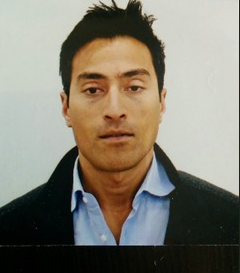Best Practices in Diagnostic Radiology by Dr. Andrew Gomes
Best Practices in Diagnostic Radiology by Dr. Andrew Gomes
Blog Article

The Rising Challenge of Diagnostic Precision in Neurology
Exact diagnosis is in the middle of successful medical treatment, yet neurological problems stay notoriously difficult to recognize with precision. Disorders such as for instance painful mind accidents (TBI), Alzheimer's disease, and multiple sclerosis often present with overlapping signs, increasing the risk of misdiagnosis. This really is wherever sophisticated imaging techniques, like Diffusion Tensor Imaging (DTI), play a major role. Authorities in diagnostic radiology, including Dr. Andrew Gomes Sugar land tx, use DTI to map brain task and mobile disruptions with unprecedented accuracy.
Leveraging the Energy of DTI Engineering
Diffusion Tensor Imaging (DTI) assesses the motion of water molecules in mind tissue, providing detailed visualizations of bright matter tracts. This level of understanding helps radiologists discover even the smallest architectural abnormalities in the mind, providing important information for early diagnosis and designed treatments. Non-vascular interventional radiologists are individually situated to control that technology, performing minimally invasive imaging procedures to achieve a further comprehension of neurological conditions. Dr. Andrew Gomes opinions this as a game-changing software in the fight against misdiagnosis.
Data-Driven Diagnostic Philosophy
Dr. Gomes stresses a data-driven approach to radiology, advocating for the usage of advanced imaging technologies like DTI to cut back diagnostic uncertainty. By meticulously examining individual knowledge, Dr. Gomes guarantees that each analysis is reinforced by target, science-based evidence. He also features the possibility of integrating DTI benefits with synthetic intelligence techniques to further improve diagnostic accuracy. His responsibility to development and patient-centered care remains to shape the future of diagnostic and non-vascular interventional radiology.
Connecting Technology and Patient-Centric Attention
The integration of advanced neuroimaging tools like DTI not just increases the accuracy of diagnoses but in addition empowers healthcare vendors to provide more precise, patient-focused treatments. By detecting abnormalities early, radiologists enjoy a crucial role in improving outcomes and minimizing the burden of neurological diseases. Experts like Dr. Andrew Gomes remain at the lead of radiological advancements, ensuring technology can be used to their fullest potential in the constant vision to struggle misdiagnosis and raise individual care. Report this page